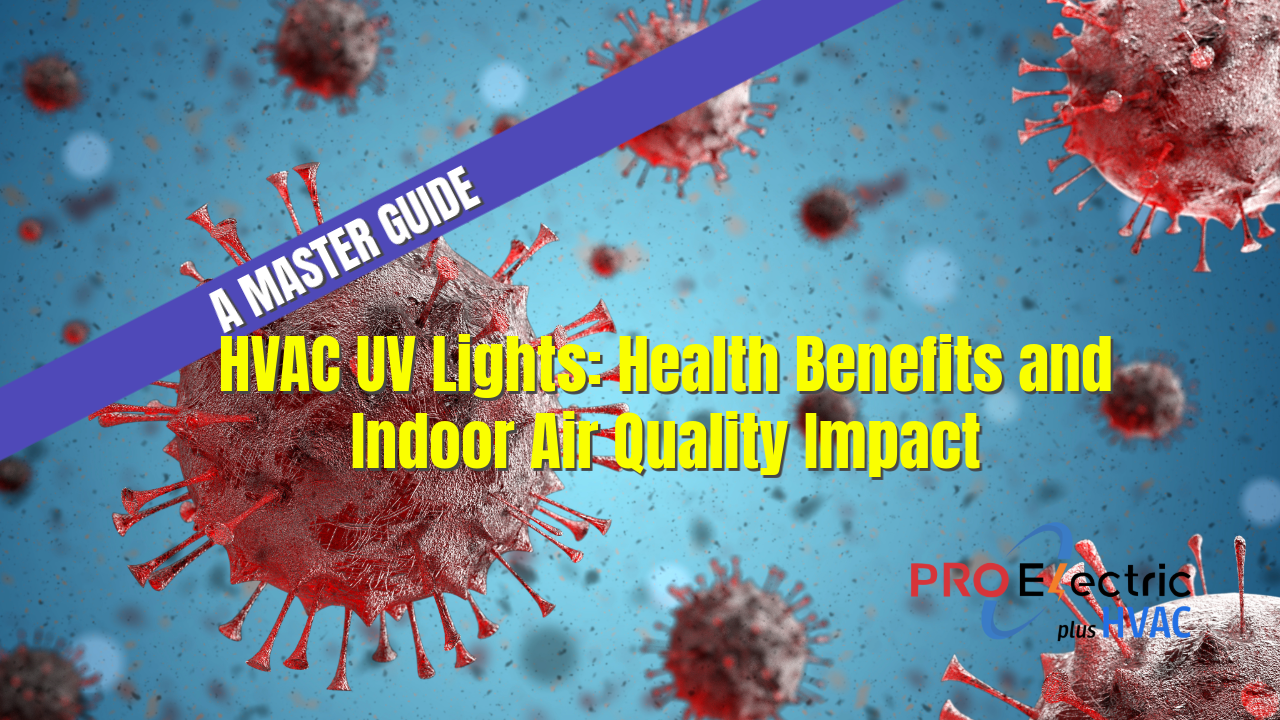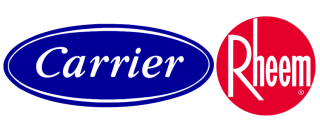We conducted in-depth research on the health benefits of HVAC UV light installation for residential homes, including how it combats harmful airborne contaminants like mold, bacteria, and viruses.
We explored the risks associated with HVAC systems that lack UV light protection, along with expert reviews and professional medical studies supporting UV technology in home ventilation systems. All hyperlinks of our sources open in new tabs.
Installing ultraviolet (UV) lights in a home’s HVAC system can significantly improve indoor air quality by neutralizing airborne contaminants like mold, bacteria, and viruses. UV light germicidal systems (often using UV-C light at ~254 nm wavelength) target microorganisms that thrive in HVAC coils and ductwork.
When microbes like bacteria, mold spores, or viruses are exposed to sufficient UV-C radiation, it damages their DNA/RNA and prevents them from reproducing or causing infection (UV Lights and Indoor Air Quality | C & C) ( Effectiveness of a UVC air disinfection system for the HVAC of an ICU – PMC ). In essence, UV light “deactivates” these pathogens so that even if they remain in the air, they are no longer viable threats. The result is a cleaner HVAC system that circulates healthier air throughout the home.
How UV Lights Improve Air Quality and Health
(Remove Viruses with HVAC UV Light – PRO Electric plus HVAC) Example of a UV light unit installed in a residential HVAC system. The image shows an air scrubber UV device mounted on an HVAC plenum. Such a device houses UV-C lamps that continuously bathe the interior evaporator coil and passing airstream in germicidal light. By irradiating the damp coil surfaces, the UV light prevents mold and bacteria from colonizing the HVAC unit. Microbes in the moving air are likewise zapped by UV as they flow by. These UV systems are enclosed within the ductwork or air handler, so occupants aren’t exposed to the UV rays during normal operation.
Properly installed HVAC UV lamps act as a 24/7 sanitizer for your ventilation system. Below are key ways they benefit indoor air quality and health:
- Kills Mold & Mildew on Coils: UV lights keep the HVAC’s evaporator coil and drain pan free of mold growth. The evaporator coil is wet and dark when cooling, a perfect breeding ground for mold and biofilm. UV-C illumination sterilizes mold spores on these surfaces, preventing colonies from taking hold (UV Lights and Indoor Air Quality | C & C). This not only stops the mold from circulating spores (which can trigger allergies and asthma) but also eliminates that musty “dirty sock” smell often caused by moldy HVAC coils. Industry data show UV lamps typically eliminate about 97% of mold on coils (UV Lights and Indoor Air Quality | C & C), greatly reducing mold spore counts in the home’s air.
- Reduces Airborne Bacteria: Germicidal UV light neutralizes bacteria that would otherwise circulate through the ducts. As air recirculates, any bacteria floating in it or growing on HVAC surfaces get exposed to intense UV-C, which breaks their genetic material and renders them harmless (UV Lights and Indoor Air Quality | C & C). This can noticeably improve indoor air quality by cutting down on pathogens and even odor-causing bacteria. In fact, peer-reviewed studies have found that HVAC UV installations can reduce viable bacterial counts by on the order of 97% compared to systems without UV (Are HVAC UV Lights Safe? | Hoff Heating & AC). By killing bacteria, UV lights act like an always-on disinfectant, which is especially helpful during cold and flu seasons.
- Neutralizes Viruses: UV lights are highly effective against airborne viruses. Viruses tend to be smaller and often even more UV-sensitive than bacteria (Do UV Lights Really Make Indoor Air Quality Better? – GreenBuildingAdvisor), meaning a proper UV-C dose can inactivate them quickly. As the CDC explains, when viral particles in the air pass through a UV disinfection zone, they are essentially “killed once they receive an appropriate amount of UV energy” – the particles might still be present, but they’re no longer infectious (About Germicidal Ultraviolet (GUV) | Ventilation | CDC). Research confirms this virus-killing power: experiments at Duke University demonstrated over 99% inactivation of viruses like influenza after UV-C exposure (Improving Indoor Air Quality with UV Light). By installing a UV lamp in the HVAC, homeowners add a layer of protection that continuously attacks viruses (such as cold viruses, flu, or even SARS-CoV-2) circulating in the ventilation system.
- Overall Healthier Air (Fewer Illness Symptoms): Because UV lights dramatically cut down microbes in the HVAC system, they can lead to tangible health improvements for occupants. In one notable double-blind study published in The Lancet, office buildings that installed UVGI lights in their ventilation saw a 99% reduction in microbial contamination on HVAC surfaces (coils, pans, etc.), and the 771 workers in those buildings reported significantly fewer respiratory and mucosal symptoms when the UV lights were on ( A Review of Recent Evidence for Utilizing Ultraviolet Irradiation Technology to Disinfect Both Indoor Air and Surfaces – PMC ). This research suggests that by keeping the HVAC system clean and germ-free, UV lights can reduce “sick building syndrome” complaints and allergy/asthma issues indoors. Homeowners often find that after adding UV lamps, the air smells fresher and family members experience less frequent irritation or illness related to indoor air quality. While UV alone won’t remove dust or non-living particles, it complements filtration by targeting the biological pollutants that filters might miss (or that can grow on filters and coils).
It’s important to note that UV lamps work best as part of a multi-pronged air quality strategy. They don’t replace air filters or ventilation but rather add an extra layer of germicidal action. As one engineering guideline put it, any pathogen that isn’t caught by filtration can be “inactivated by another (UV-C)” in a layered approach (UV-C for HVAC Air and Surface Disinfection). Thus, a UV system, combined with good filtration and humidity control, can significantly boost a home’s protection against indoor contaminants.
Indoor Air Quality Issues Without UV Protection
HVAC systems that lack UV light protection are more prone to harboring and spreading biological contaminants. The inside of an HVAC unit – particularly the cooling coil and drain pan – is often a moist, cool environment where microbes thrive. Without UV lights, these hidden areas can become reservoirs of mold and bacteria that then circulate throughout your home. Here are some health risks and IAQ problems that commonly arise in HVAC systems without UV germicidal treatment:
- Mold Growth & Allergen Spread: In a dark, damp air handler, mold can quickly gain a foothold. Every time your air conditioner runs, it can blow mold spores from the coil or ducts into your living spaces. Those spores degrade air quality and may cause allergic reactions, asthma flare-ups, and other respiratory issues. As one HVAC expert describes, the evaporator coil’s condensation plus warm airflow create “the perfect conditions for bacteria and mold growth”. Once established, “lots of mold spores and bacteria then get spread around the home, worsening the indoor air quality” (UV Lights and Indoor Air Quality | C & C). In other words, an HVAC without UV (or regular coil cleaning) might inadvertently be distributing mold instead of fresh air. Mold in ducts also tends to produce musty odors and can even clog the coil with slime, reducing the system’s efficiency and ability to dehumidify. High indoor humidity from an overworked, mold-fouled HVAC can further promote biological growth in a vicious cycle.
- Bacteria and Biofilm Buildup: No UV light means there’s little to stop bacteria from colonizing the HVAC interior. Dust and organic matter that bypass standard filters can accumulate on coil fins and inside ductwork. Given moisture and darkness, these nutrients feed bacteria, which can form biofilms. Certain bacteria (or their endotoxins) blowing out of vents may irritate occupants, causing coughs or respiratory discomfort. Building scientists have documented that microbial contamination of HVAC systems contributes to building-related illnesses – including symptoms like chronic rhinitis, sinus infections, and even fevers in occupants (Effect of ultraviolet germicidal lights installed in office ventilation systems on workers’ health and well-being: Double-blind, multiple crossover trial | The Center for Health Design). If your system goes years without a deep cleaning or UV sanitation, it could be circulating microbes that make your family more susceptible to colds and infections. Additionally, bacterial growth in HVAC systems is often linked to unpleasant odors (the classic “dirty sock” smell). Without UV to continuously disinfect, you might rely on periodic duct cleaning to address these issues.
- Unchecked Viral Spread: A standard HVAC system without UV has no active mechanism to kill viruses that travel in the air. This means that if a family member is sick (say with the flu or a cold), the HVAC could potentially pick up that person’s expelled virus particles and distribute them to other rooms before they settle or get filtered out. In contrast, a UV lamp in the ducts can inactivate many viruses on the fly, reducing the change of cross-contamination. Lacking UV, your ventilation system might quietly recirculate viruses or other pathogens whenever the fan is running. One HVAC installer warns that “if your system isn’t equipped with a UV light, it’s potentially spreading disease-causing bacteria, viruses, and hidden mold throughout your home without your knowledge, thus risking your family’s health” (Remove Viruses with HVAC UV Light – PRO Electric plus HVAC). This highlights that without any disinfection technology, an HVAC can become a conduit for germs rather than a barrier against them.
- Poor Air Quality and “Sick Home” Symptoms: Ultimately, an HVAC without UV protection (and without very frequent cleaning) can degrade overall indoor air quality. Occupants might experience more frequent headaches, fatigue, or irritation – the kinds of nonspecific complaints that fall under sick building syndrome when an HVAC is contaminated. A system blowing dust, mold spores, and bacteria can lead to higher incidence of respiratory ailments for those living in the home. Over the long term, chronic exposure to mold and bacterial allergens from the HVAC can contribute to or worsen conditions like asthma, according to environmental health experts. Even energy efficiency is impacted: a biofilm-coated coil insulates the cooling fins, making the AC work harder and potentially failing to control humidity, which in turn encourages more mold growth (Sources of Contamination in HVAC Systems | National Air Duct Cleaners Association (NADCA)). In short, without UV lights continually keeping the HVAC innards clean, you risk a feedback loop of microbial growth and indoor air quality problems that can directly affect your family’s health.
Expert Evidence and Reviews Supporting UV Installations
HVAC UV lights are backed by substantial scientific evidence and professional endorsements as an effective means to improve indoor air quality. Medical researchers, engineers, and health agencies have studied UV germicidal technology for decades and generally agree that it can be a powerful tool for air disinfection when properly applied. Here we summarize some notable expert opinions and studies:
- ASHRAE (HVAC Engineering Society): The American Society of Heating, Refrigerating and Air-Conditioning Engineers has long recognized the value of UV-C in HVAC systems. ASHRAE reports that UV-C light can kill 90% or more of microorganisms living on HVAC surfaces like ducts and coils, depending on the UV intensity and exposure time (UV-C for HVAC Air and Surface Disinfection). Running UV lamps continuously (24/7) over the cooling coil can nearly sterilize those surfaces. This means fewer germs available to aerosolize into the airstream. Such findings have led ASHRAE and other experts to recommend UVGI as a supplement for maintaining clean coils and improving air sanitation in buildings.
- EPA and CDC Guidelines: The U.S. Environmental Protection Agency notes that a properly designed UVGI cleaner “may destroy indoor biological pollutants such as viruses, bacteria, and some molds” on HVAC surfaces (Does ultraviolet (UV) radiation from UV lamps kill mold? | US EPA). The EPA does caution that typical small residential units must be well-designed and positioned to be truly effective, since hardy mold spores might require a higher UV dose than some units provide (Does ultraviolet (UV) radiation from UV lamps kill mold? | US EPA). Nonetheless, the potential for UV to neutralize pathogens is well-established. The Centers for Disease Control and Prevention also include upper-room UVGI as a recommended intervention to reduce airborne disease transmission in high-risk settings (About Germicidal Ultraviolet (GUV) | Ventilation | CDC). While CDC’s guidance focuses on commercial/group environments, the same principle applies in homes: UV energy can inactivate viruses and bacteria aloft in the air (About Germicidal Ultraviolet (GUV) | Ventilation | CDC). Both EPA and CDC stress that UV is best used as part of a multi-layered strategy (along with filtration and ventilation) to maximize indoor air safety (About Germicidal Ultraviolet (GUV) | Ventilation | CDC) (UV-C for HVAC Air and Surface Disinfection).
- Peer-Reviewed Medical Studies: Multiple studies in hospitals, laboratories, and offices have tested HVAC UV lights and found significant benefits. Aside from the Lancet study in offices (99% microbe reduction on coils and fewer worker sick symptoms, as mentioned earlier), hospital research also confirms efficacy. For example, a 2022 study installed UV lamps in an ICU’s HVAC system and reported “encouraging results, demonstrating the effectiveness of the installation” and even suggested similar UV devices should be installed in HVAC systems to “avoid biological risk to people inside buildings” ( Effectiveness of a UVC air disinfection system for the HVAC of an ICU – PMC ). Another review of decades of data (University of Boston) concluded that UV disinfection systems are “highly effective at reducing viable airborne bacterial and fungal bioaerosols by well over 90%” in occupied spaces (Improving Indoor Air Quality with UV Light). These findings from the scientific community reinforce that UV lights can dramatically reduce the microbial load in indoor air. In practical terms, fewer live germs in the air means lower likelihood of infections spreading and fewer irritants to trigger allergies.
- Professional HVAC Industry Reviews: HVAC professionals often share real-world observations that UV lights lead to cleaner systems and healthier air. Trade publications and indoor air quality experts commonly report that adding UV lighting in HVAC units results in noticeable declines in mold growth and complaints of musty odors (UV-C for HVAC Air and Surface Disinfection). As one industry case example, a field study by a UV equipment manufacturer showed that after UV was added, microbial counts in the air dropped and the HVAC coil stayed free of bio-slime (Effect of ultraviolet germicidal lights installed in office ventilation systems on workers’ health and well-being: Double-blind, multiple crossover trial | The Center for Health Design). Many homeowners and HVAC contractors consider UV lights a worthwhile upgrade for anyone with immune sensitivities or persistent mold allergies, given the documented reductions in contaminants. The technology has been used for years in hospitals, labs, and food processing to keep microbes at bay (UV Lights and Indoor Air Quality | C & C), and that same proven germicidal action is now available at a residential scale. Experts emphasize, however, that UV lamps must be installed correctly (optimizing lamp placement, intensity, and run time) for best results – a poorly installed UV light won’t magically cure air quality issues (Does ultraviolet (UV) radiation from UV lamps kill mold? | US EPA). But when properly implemented and maintained (bulbs replaced annually, etc.), UVGI systems are a reliable, low-maintenance way to continuously disinfect the air in a home.
In summary, the consensus from professionals and researchers is that HVAC UV lights are an effective defense against biological indoor air pollutants. They help kill or deactivate mold, bacteria, and viruses inside the HVAC system, preventing those microbes from multiplying and recirculating in your home’s air (UV Lights and Indoor Air Quality | C & C) (About Germicidal Ultraviolet (GUV) | Ventilation | CDC). Houses without UV protection can suffer from hidden mold in ducts or bacteria-laden coils that undermine air quality and pose health risks, whereas a UV-equipped system actively sanitizes the airflow, leading to a healthier living environment. While UV lights are not a standalone solution (you still need good filters and regular HVAC maintenance), they provide an extra layer of protection that has been shown to significantly improve indoor air quality. In an authoritative sense, installing a UV light in your HVAC is a proven, medically backed method to combat airborne contaminants – helping ensure that the air you breathe at home is as clean and safe as possible ( Effectiveness of a UVC air disinfection system for the HVAC of an ICU – PMC ) ( A Review of Recent Evidence for Utilizing Ultraviolet Irradiation Technology to Disinfect Both Indoor Air and Surfaces – PMC ).



